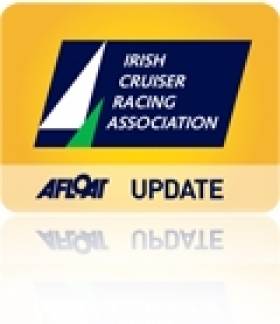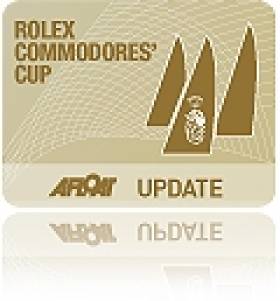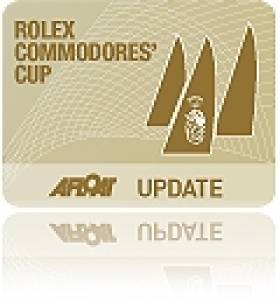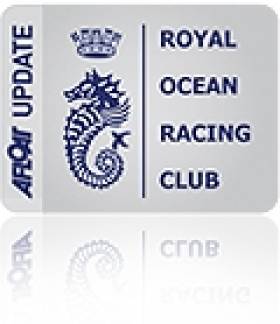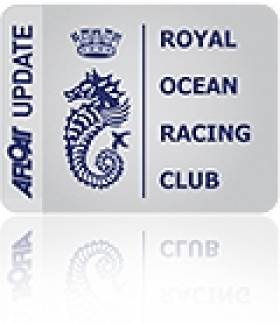Displaying items by tag: Roxy
Commodores' Cup Boats Jointly Awarded Boat of the Year Award
There was a strong seal of approval from sailing delegates at the ICRA Conference yesterday evening for the decision to award the Boat of the Year prize to all three Royal Cork boats from the winning Irish Commodore's Cup team.
Antix, Marinerscove and Roxy lifted the trophy to loud applause at the Carrigaline Court Hotel, the venue for ther eighth annual meeting of Irish Cruiser Racer interests. Last night Commodores Cup celebrations continued at the Royal Cork Yacht Club at a special dinner in honour of the team who brought home the cup after more than a decade of attempts.
In announcing their decision the ICRA judging team stated that as there was 'no way they could split the RCC boats that made up the winning team' this summer. The decision had been expected given the importance of the international victory in Cowes.
Earlier this month a readers poll on Afloat.ie that attracted nearly 3,000 votes showed an offshore yacht Raging Bull from Skerries to be a popular choice for the trophy. HERE. Discussion HERE. It's an indication of the widening appeal of a part of the sport that has been rekindled on the Irish Sea.

ICRA's Boats of the Year: The Cork team that won the Commodore's Cup. Montage by Bob Bateman
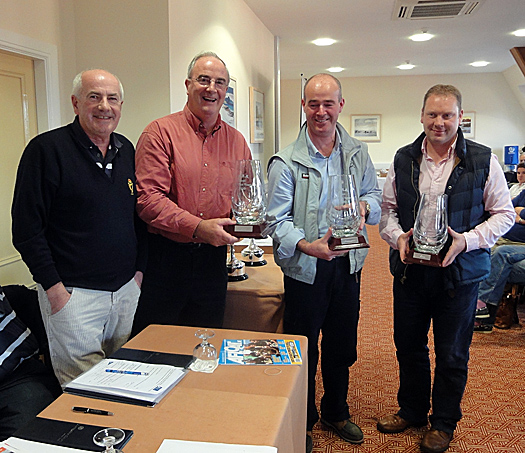
Winning Trio: ICRA Commodore Barry Rose (left) with skippers Anthony O'Leary, Dave Dwyer and Andrew Creighton. Photo by Peter Ryan
Who Will Win ICRA's Boat of 2010?
Will it be Antix, Marinerscove or Roxy's year? It might be hard to ignore the sailing performance of 2010 but there have been some fine non-Commodore's cup performances too. The judges decision may well be final at the Irish Cruiser Racer Association (ICRA) conference on November 13th but before then we're taking our annual look down the likely candidates and letting YOU decide who you think should be Boat of the Year. Vote now in our Poll on the left hand column of the home page!
Ireland Claims Victory in Blustery Rolex Commodores' Cup Finale
Ireland has done it. After mounting multiple teams, considered favourite going into both the 2006 and 2008 events but failing to win either, so the Irish boats Antix, marinerscove.ie and Roxy 6 today secured the Rolex Commodores' Cup for the emerald isle.
"It is delightful to finally have a chance to get our hands on the trophy," declared Anthony O'Leary, owner and helmsman of the Ker 39 Antix, the Irish team's big boat. "For all three boats, the Rolex Commodores' Cup has been the absolute pinnacle of what we have wanted to do this year. While Antix and marinerscove have been around, it is a credit to the guys on Roxy because they had a new build and got the boat in the water, and then there were all the attendant things you have to do. Owner Rob Davies, in fairness to him, didn't take a huge amount of persuasion to sign up and make the extra effort required to do it. We owe him a huge debt."
winn
Roxy 6's pro sailor Maurice 'Prof' O'Connell added: "We put in a massive effort and it is nice to have got the reward. Cowes is going to go ballistic tonight!"
The 2010 Rolex Commodores' Cup could not have finished on a better note. While the day dawned grim, with rain and visibility down to less than a mile, by start time at 10:30BST it was blowing 20+ knots and with the tidal effect this was churning up the Solent. With the weather mark not visible there was a distinct Irish hiccup on the first start when Antix collided with a French competitor and had to carry out a penalty turn.
"It was 110% our fault, but we are glad we got it out of the way," said O'Leary. "Fortunately with that amount of weather, there was always going to be a chance to have a come back."
And so it was on the run when, with the wind gusting to more than 30 knots and the sea seeming to come from all directions, that there were many instances of boats becoming overpowered and wiping out. This provided O'Leary and his crew with the chance they were looking for: "Down the first run Inis Mor tried to gybe, spun out and blew her kite to bits. White Heat had the same problem just ahead. Then we got to the bottom mark and our friends from Hong Kong trawled the kite, so we got inside them. Then we extended to the finish."
This was enough for Antix, despite her poor start, to post a second, typical of her scoreline this week, which has never featured a result lower than this.
One of the most dramatic scenes from the water today was of the Farr 45 Alice II in GBR White, streaming the top of her blown out spinnaker on the final upwind leg at the extent of the halyard.
"Coming into the leeward mark we saw 36.4 knots," recounted Alice II crewman James Read. "We were doing 17 knots in flat water and about one third of the chute was in the hatch and then thehead just caught the water and then 'zooop' it went out of the back, the sheets, the lot... We tried to blow the halyard but it wrapped up. So we flew it as a massive flag for the last beat! It was a bit of an air break."
In the two smaller classes, there were few boats that came off unscathed, other than the impeccable Irish. Peter Rutter's Grand Soleil 43 Quokka 8 in GBR Red had to retire when the bottom of their mast buckled. On the downwind legs there were many many broaches, the most dramatic being that of François Blossier's A-35 RealAx in France Red, which ended up with her masthead almost in the water.
"It was a little bit windy," admitted Blossier, who sails with a completely amateur crew and raced the Rolex Commodores's Cup four years ago on Pierre Follenfant's TBS. "We had a problem, because we took the big black spinnaker and we probably should have taken the smaller one. When we gybed we had a little bit of trouble with the pole...and that was it."
On board Blondie IV with the Hong Kong teams, Jamie McWilliam found the conditions exhilarating. "It was a perfect day, brilliant. I wish it had been like that all way. The funny thing about it, it was very tricky to catch a set of waves that worked because they were coming from everywhere. It was very sporty coming down the last run. The tack shackle of our tack line on the kite, which has a working load of 4 tonnes, exploded in a 20 ton gust. It was magic!"
McWilliam's Hong Kong team finished second to the Irish, on 117.5 points to Ireland's 73.5. However McWilliam was satisfied with the result: "I think if we'd been second having cocked it up, it would have been irritating, but the Irish guys sailed with great style and great skill and I'm absolutely delighted for them."
Andrew McIrvine, Commodore of the RORC said that his Beneteau First 40 La Réponse had been pushed to the limit. "We shredded a spinnaker. All our jammers started slipping. We have never put them under so much load before - they were tested beyond their working strain."
Otherwise McIrvine was pleased with the outcome of the regatta. "It has gone very well, particularly for the Irish who very much deserved their win. It was a very exciting day. As the French said it was 'un peu agitée'!' The results are good. Everyone had a good day. Ireland deserved it. They got so nearly there before. Now they have a hot team and they have gone for it properly and they deserved to win."
Top Five Teams – Provisional Overall Positions after completion of 8 races
Team / Points / Place
Ireland / 73,5 / 1
Hong Kong / 117,5 / 2
France Blue / 136 / 3
France Yellow / 167 / 4
GBR red /175 / 5
Full results and team lists are available at http://commodorescup.rorc.org/
Additional PR issued by ICRA;
Ireland wins Rolex Commodores' Cup at Cowes
As winds gusted to Near Gale force, Ireland's three boats in the Rolex Commodores' Cup delivered their strongest result since last Sunday's first day with a first and two second places in the high-scoring series finale. The Irish Cruiser Racing Association team of Antix, marinerscove.ie and Roxy will be presented with the trophy at the Royal Yacht Squadron at 5.00pm today.
Mist and driving rain clouded the racing area for the duration of the 90-minute race but presented no obstacles to the trio. Team captain Anthony O'Leary at the helm of Antix was able to recover from a pre-start incident with a French entry by taking a penalty-turn seconds before the start to avoid a protest and went on to score second place in Class 1.
Both marinerscove.ie skippered by Dave Dwyer and Roxy 6 subsequently steered clear of other boats and started well to score a race win and second place respectively. Overall, Ireland increased its lead to a winning margin of 44-points with Hong Kong placed second and France Blue in third.
"We finally managed to do what we've been trying to do for quite a very long time," commented O'Leary at Cowes Yachthaven marina shortly after coming ashore. "Thankfully we got the conditions that suited the Irish boats better than others; we are strong in those winds as we're well used to sailing them at home."
The win is the first major international trophy at Cowes in almost four decades of successive Irish teams who have come close to overall wins in the Admiral's Cup in 1979 and 1987 also as more recently in the Rolex Commodores' Cup that succeeded it.
"If you go back 30-odd years, you had Denis Doyle, Clayton Love and Archie O'Leary bringing boats here to sail in the Admiral's Cup," said O'Leary. "The demise of the Admiral's Cup led to the start of this event and Ireland has been sending teams for a very long time.
"We've been winning races and in the hunt in both previous events but seemed to fall at the final hurdle or not have that vital bit of luck when it counted. This time round I think probably we've had the strongest team we've ever had, with good focus and it managed to work out well."
The three-boat team was supported by shore-crew and representatives from the Irish Cruiser Racing Association both in Cowes and with extensive assistance from home as well. "This is the result that we had set our sights on and through the dedicated and united effort of everyone, we have won the Commodores' Cup for Ireland and Irish Sailing," said Barry Rose, ICRA Commodore. "We look forward to bringing everyone together at home for a full celebration of our sailors' achievements in Cowes over the past seven days."
"The fact that there are 50-plus people here for a week, trying to win a sailing event is proof enough that we want it and we were prepared to work very, very hard to get there and thankfully it came off in the end," said O'Leary.
Update: Ireland Going Well In Round the Island Race
Ireland is off to a great start this morning in the Round the Island Race. ICRA Commodore Barry Rose is out by the Needles. He says: "Antix is doing super in Class 1. Mariners is fourth on the water and ahead of most her Class One. Roxy second to Rockall, probably third in class" More as we have it.
keep up to date here:
http://commodorescup.rorc.org/fleet-tracking/2010-live-offshore-tracking.html
Send good luck messages here:
http://www.afloat.ie/commodores-cup/item/13716-commodores-cup-send-your-good-luck-wishes-here/
Day Two: Ireland Has Runaway Lead in Commodores' Cup
After two further inshore races off Cowes today, the Irish Cruiser Racing Association's (ICRA) three-boat team continues to hold the overall lead of the Rolex Commodores' Cup at Cowes. The team has a 20.5-point advantage.
Team Captain Anthony O'Leary's Antix scored a first-place tied with Codiam of the France Blue team in the morning race and followed this with a second in the afternoon. Class 2 entry Marinerscove.ie fourth and second for the day while Rob Davies Roxy 6 in Class 3 had a seventh and a well-earned race win.
"It was a great days racing with tough conditions this morning in 18 knots of breeze," commented Barry Rose, ICRA Commodore. "We had a bit of a fight in some of the classes and we dug out three results with a very strong performance in the afternoon. All in all, it was a great day's work in sometimes tricky conditions."
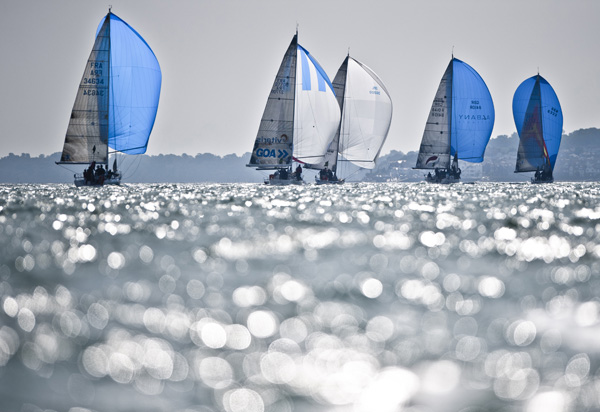
The fleet go downwind. Photo: Kurt Arriga/Rolex
The GBR Red team holds second overall with France Blue in third, just 5.5 points behind having improved from seventh overall in Day 1.
Tomorrow (Tuesday) sees the start of the Offshore Race that counts for 2.5 times the points of a normal inshore race. The course is intended to last between 24 and 36 hours in duration and by the conclusion, just over half the points for series will have been won.
"We'll put our minds to our minds to having a very positive approach to the offshore and be consistent for the duration," said Rose. "The aim is to sail strongly for the full duration – it won't be containment and we intend to keep up the intensity."
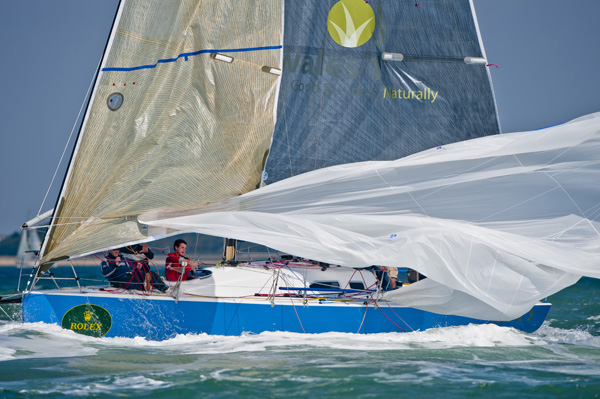
Roxy 6 douses her kite. Photo: Kurt Arriga/Rolex
Conditions were perfect for today's two races with brilliant sunshine and more breeze – 14-17 knots from the northwest for the first, dropping off to 10-15 for the second. First up was an inshore race around the length and breadth of the eastern Solent, followed by a shorter windward-leeward course set off Hill Head on the mainland shore.
In the big boat class race one saw a rare corrected time tie between Anthony O'Leary's Ker 39 Antix (IRL), maintaining her perfect scoreline for the Irish team, and Nicolas Loday and Jean Claude Nicoleau's Grand Soleil 43 Codiam in France Blue. While Antix remains the boat to beat among the big boats, it was Codiam that scored two bullets today.
"I think the conditions were ideal for our boat, which is a bit heavy and ideally needs about 15 knots," commented Nicolas Loday, racing his fourth Rolex Commodores' Cup, but his first in the Grand Soleil 43. "It is a boat that goes very well with flat water. It is not at all a boat that goes fast in the big waves or the choppy seas you get in the Channel. So today the conditions were perfect for this boat – like yesterday, but yesterday we made wrong tactical decisions. Today we kept close to the other boats and this paid off very well."
Perhaps it was coincidence, but in Class 2 another Grand Soleil 43 shone today with former RORC Commodore Peter Rutter's Quokka 8 (GBR Red) scoring two bullets ahead of UNCL Commodore Marc de Saint Denis and Géry Trentesaux's Coup de Coeur (FRA Blue) and Ireland's marinerscove.ie, belonging to David Dwyer. Quokka 8 rates at 1.103 under IRC compared to Codiam's 1.110 as the French boat has a larger sail plan.
"We didn't feel on fire yesterday losing one race by 6 seconds and another one by less than a minute," explained Peter Rutter. "We needed to sit down and think - we did that last night and it's come out fantastic. We have a different way of trimming the main and we are also making sure that people only stop hiking out when given permission to. So, a bit more dictatorial, but it worked really well and the crew felt really happy."
Rutter felt their performance today was to down the change in crew work rather than having the ideal boat for the conditions. "It wasn't that different from yesterday, a little more wind. We stopped being stupid really."
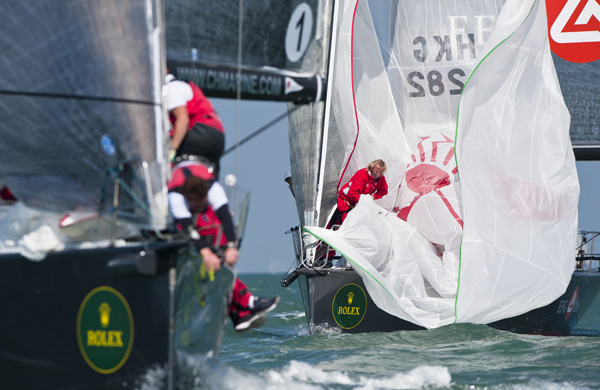
Antix jostles for position downwind. Photo: Kurt Arriga/Rolex
In the flat water and moderate conditions, the smaller higher-rated boats did seem to suffer today. Marinerscove.ie the Class 2 boat from the all-powerful Irish team struggled to post a 4-2. "We are in a 39-foot boat racing against 43-foot boats which rate significantly lower than us - it is very hard for us especially in the medium to upper wind ranges," commented her tactician, former America's Cup helmsman Andy Beadsworth. "After the first race we said 'we sailed well, for sure we could have done some things cleaner and smarter, but we were never going to beat those guys'. That was the reality."
In the second race Beadsworth was particularly pleased when his call to go left up the first beat came good, despite dissenters on board. They ended up reaching the weather mark a minute ahead of the competition.
The South African team is still trying to get out of its own way, lying seventh equal with GBR White after day two. Their mid-sized boat, Mike Bartholomew's King 40 Tokoloshe has been based in the Solent for two years, but Bartholomew says they have been struggling to get off the line cleanly. "It is essential in this type of racing. The races are being won and lost in the first 30 seconds. We have had four races where we haven't done that and we are paying the price. It has been very tight racing. We are disappointed we haven't done better than we have. We know what we are doing wrong and it is a case of trying to correct it."
In Class 3 Marc Alperovtich and Jerome Huillard's A-35 Prime Time won today's first race for France Yellow, while Robert Davies' Roxy 6 took the second for the Irish. But once again it was France Blue that came to form with Samuel Prietz' X-40 Goa claiming second in both today's races.
"Yesterday we had some minor difficulties with boat handling," admitted Prietz, a past Codiam crewman, for whom this is also his fourth Rolex Commodores' Cup. "We haven't sailed together since June, so yesterday we didn't do so well. We missed a couple of opportunities in tactics, also we were not able to point high enough comparing to some other boats - so not really promising. Today we sailed much more relaxed, with a much better mood inside the team."
Tomorrow, the complexion of the Rolex Commodores' Cup changes with the start at 10.30 BST of the 24-36-hour offshore race. The weather is also expected to take a turn for the worse with the passage of a front tomorrow afternoon. According to meteorologist Mike Broughton, working with the Irish team, this will bring with it 20-plus knot winds, before conditions lighten on Wednesday night, and then fill in again on Thursday. "It means it won't be a complete lottery. There will be no thermal switch off," he advises.
Offshore in waves with a mix of wind conditions, along with the rigours of racing at night, maintaining focus with little or no sleep, perpetually on the rail, after up to 36 hours of racing – will a new group of boats come to the fore? Past experience indicates that the French and British teams have proved strongest in the Rolex Commodores' Cup two-and-a-half points scoring offshore race. And, if there are stronger gradient winds - will the Irish continue to be the class act? We will not have the final answers to these questions until Wednesday, but by tomorrow night we may some pointers. All yachts will be carrying tracking units with the positions presented at: http://commodorescup.rorc.org
Top Five Teams - Provisional Positions 16/8/10
Team / Points / Place
Ireland / 24.5 / 1
GBR Red / 45 / 2
France Blue / 51.5 / 3
Hong Kong / 54 / 4
France Yellow /59 / 5
IRC Nationals Photography here!
Sailing snapper Paul Wyeth's photos of Britain's IRC Championships are showing the Solent off to the very best this weekend. A combination of great breeze, great sunshine and a keen photographer's eye is producing great results. The Irish boats competing Marinerscove, Antix and Roxy must think they're back home in Cork Harbour!
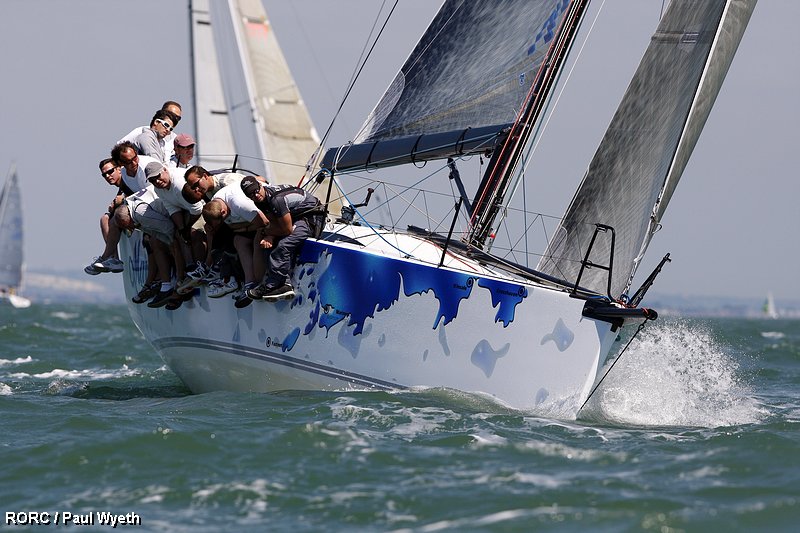


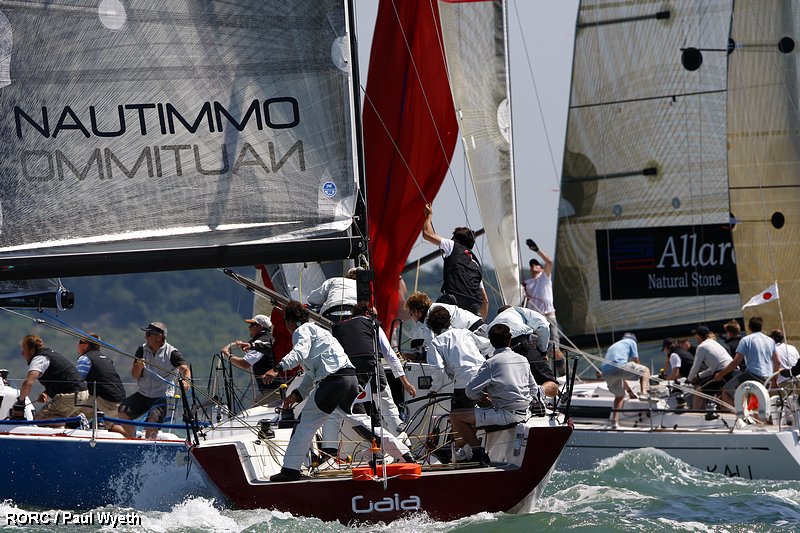
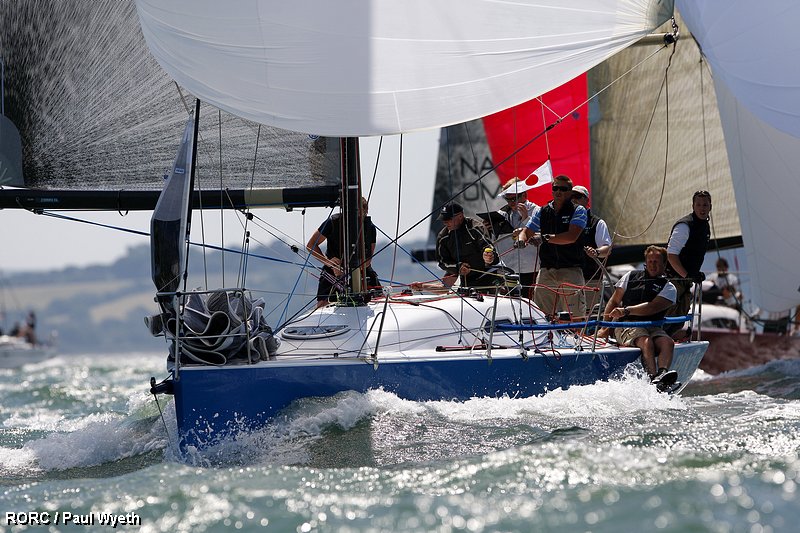
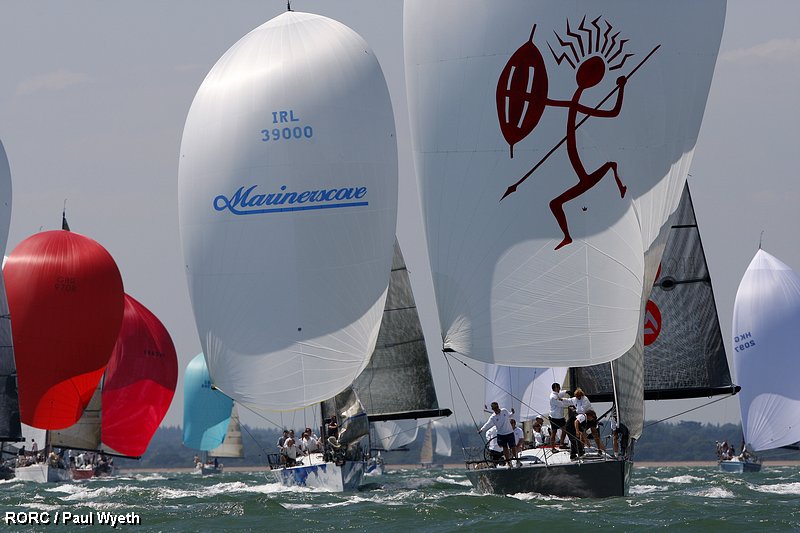
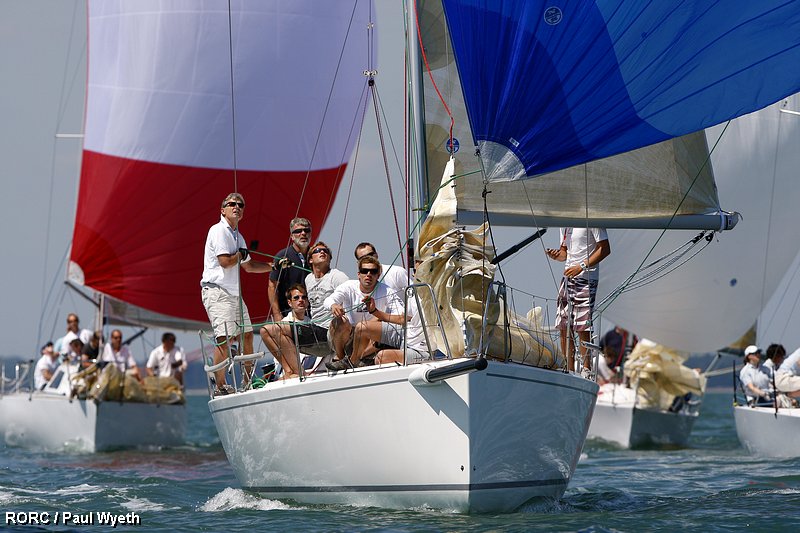


Irish Trio Head for UK IRC Championships
The RORC UK IRC National Championship includes a trio of Irish boats that adds spice to an event that alos draws competitors from Belgium, France, Great Britain, Hong Kong and the Netherlands. Competing on tight Solent courses there is no doubt that this will be a very competitive regatta with plenty of high-octane action writes Louay Habib.
The international fleet contains many of the competitors that will be taking part in this year’s Rolex Commodores’ Cup and the scene is set for some close racing between rivals old and new. All of the classes racing at the IRC National Championship are brimming with talent.
IRC Super Zero has the mouth-watering prospect of the high performance big boat class lighting up the Solent including some TP52s; Johnny Vincent’s Pace, Charles Dunstone’s TEAMORIGIN Rio, the British Keelboat Academy’s John Merricks II and Rob Grey’s, Farr 52, Bob.
IRC Zero is virtually composed of Rolex Commodores’ Cup contenders from six different countries. Anthony O’Leary’s Ker 39, Antix, is the current Irish IRC Zero National Champion but only just beat Dave Dwyer’s Mills 39, Marinerscove.ie, by a single point less than a month ago. However Marinerscove.ie is the reigning IRC National Champion and will not be letting go of the trophy without a struggle.
IRC One has a highly competitive international line-up. Philippe Delaporte’s, Pen Azen, is over from France and the J 122 is a proven winner; having been awarded RORC Yacht of the Year in 2008.
“Pen Azen will be representing France in the Rolex Commodores’ Cup this August,” explained Philippe. “We see the RORC IRC Nationals as a perfect way to prepare for the event, the crew will be getting used to living in Cowes and the surroundings but also we will get some fantastic racing with our competition on the same race course.”
IRC One also includes RORC Commodore, Andrew McIrvine, and Peter Morton’s First 40, La Réponse, who will have their first inshore encounter with sister ship Coup De Coeur raced by Marc de Saint Denis and Géry Trentesaux. Other top contenders include Jim Macgregor’s Elan 410, Premier Flair, and Robert Davies’ brand new Corby 36, Roxy 6. IRC One should also provide some tense moments and close mark roundings with five First 40.7s amongst the high caliber fleet.
IRC Two is the largest fleet competing and includes the biggest variety of designs including David Aisher’s J 109, Yeoman of Wight, Wouter Borghijs’ A 35, Tontin, from Belgium and Chris and Hannah Neve’s First 35, No Chance, who have been selected for the forthcoming Rolex Commodores’ Cup. “The First 35 is a new design this year and we are absolutely loving the boat,” explained Chris Neve. “We are really looking forward to the championship.”
The scratch boat in IRC Three is Mike and Jamie Holmes’ J 97, Jika Jika, who should have a close tussle on the water with Richard Sparrow’s J 92, Who’s To No.
There are several Quarter Tonners expected including Paul Kelsey’s Runaway Bus, James Morland’s Menace and Louise Morton’s Espada. “This week there were 35 boats competing for the Quarter Ton Cup, enjoying some fantastic racing. It would be marvellous to see a big turn out for the RORC IRC National Championship, it is a great event and one not to be missed,” said Louise.
Early entry closes tomorrow, Thursday 17th June. For full information go to the RORC web site: http://www.rorc.org




























